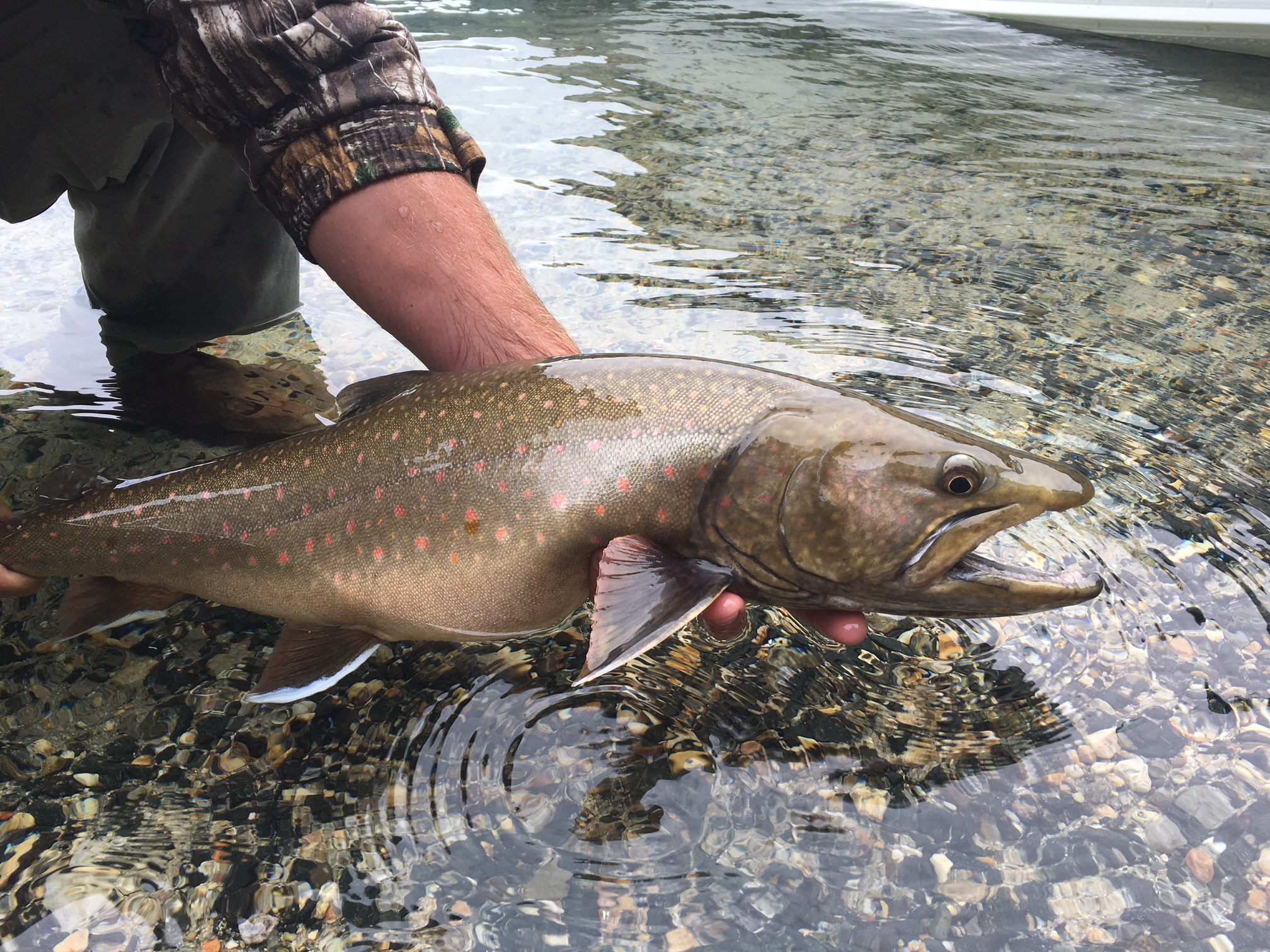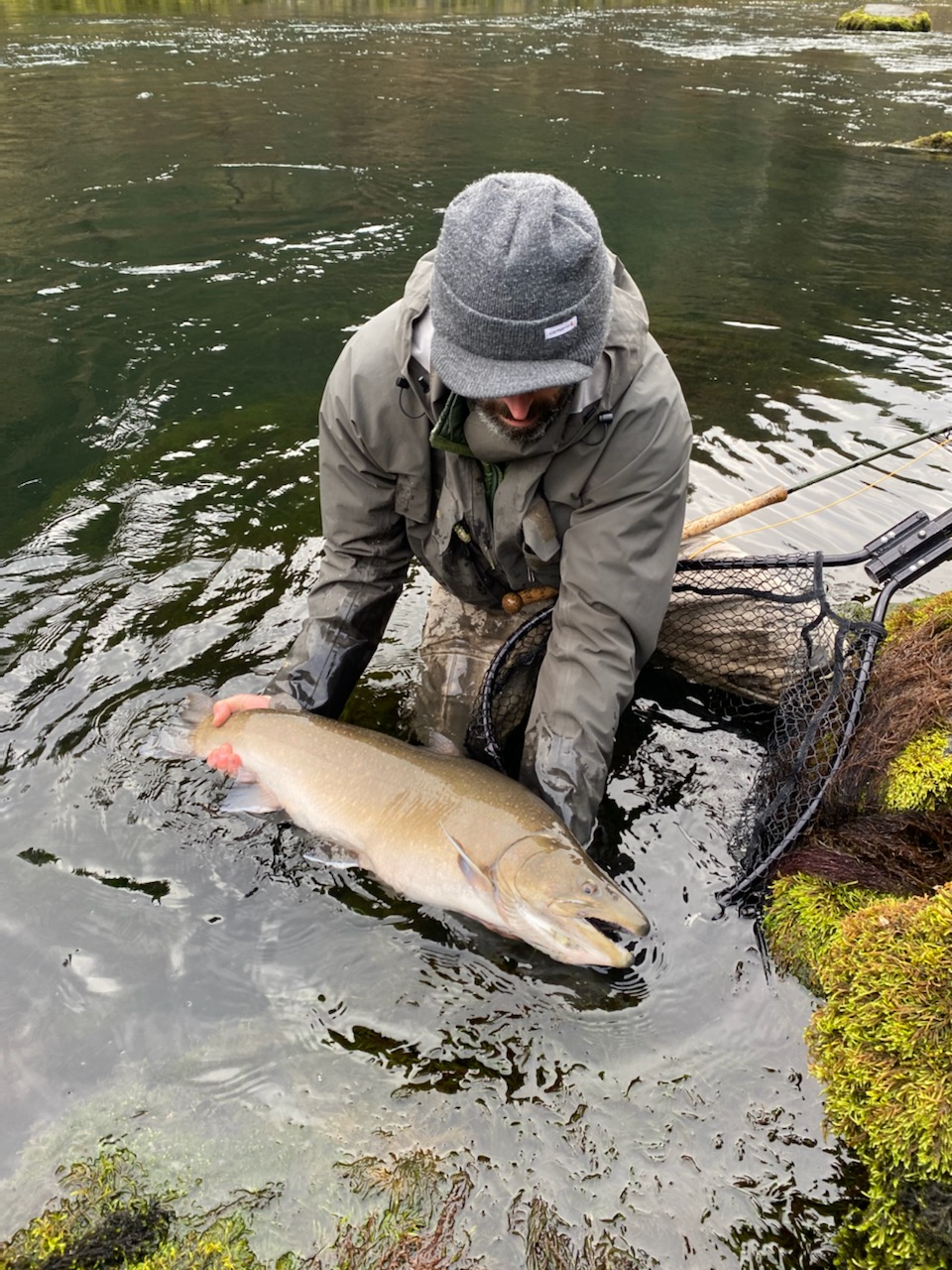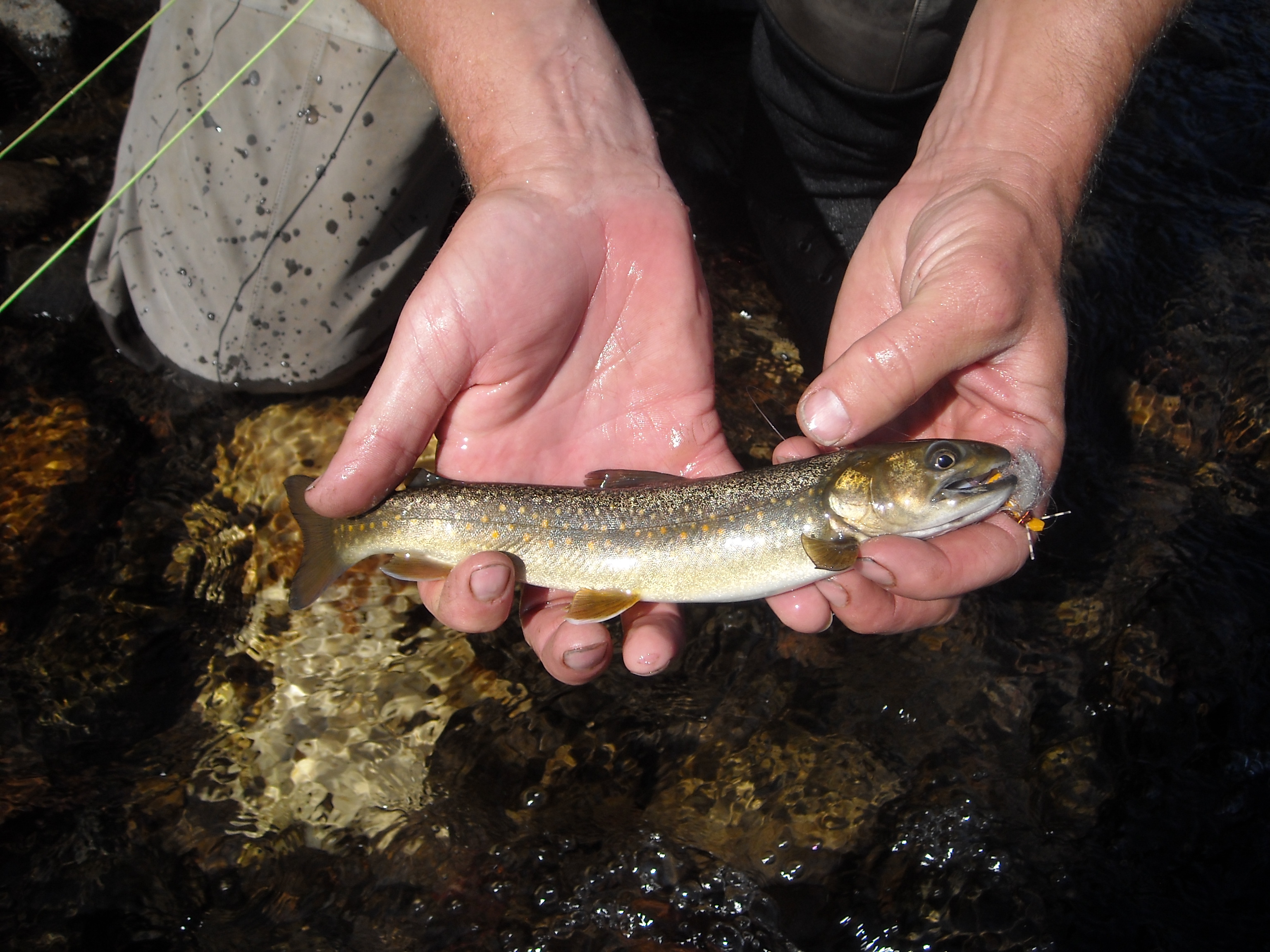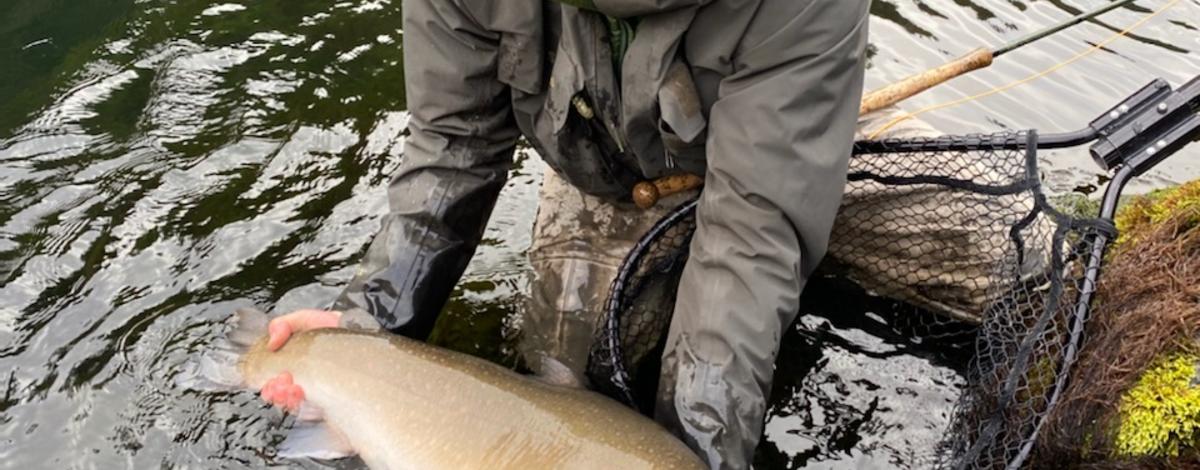We often talk about the complexities of Idaho’s anadromous salmon and steelhead which make their long journey all the way to the ocean and back, but another Idaho native, the Bull Trout, has some amazing tricks up its sleeve.
Idaho’s Bull Trout are dispersed across much of the state, ranging from the Canadian border all the way south to drainages such as the Boise River, Little Lost, and even the Jarbidge River which originates in Nevada. Since Bull Trout are found in so many places, they are required to adapt to a wide variety of habitats. The result is a variety of strategies, known as life histories, being used by Bull Trout to maximize the use of the habitats available. Here are the major life history types of Bull Trout in Idaho.

Adfluvial: This term refers to fish that are born in a headwater stream, migrate and grow up in a lake, and then return to the headwater stream to spawn. In general, lakes have more food resources for Bull Trout than headwater stream where they are born. So, after Bull Trout hatch and live in the streams they were born in for a couple years, adfluvial Bull Trout migrate downstream to lakes to take advantage of better food resources and therefore growing opportunities. This life history is most prevalent in northern Idaho with our version of Great Lakes such as Lake Pend Oreille, Priest Lakes, and Lake Coeur d’Alene. It’s no coincidence that Idaho’s state record Bull Trout of 32 pounds came from Lake Pend Oreille.

Fluvial: This term refers to fish that are born in a headwater stream, migrate and grow up in a large river, and then return to the headwater stream to spawn. Similar to migrating down to a large lake, Bull Trout that migrate down to a large river system are doing this to find better food and grow faster and bigger than if they stayed in the headwater stream they were born in. This life history requires connectivity between headwater streams and the downstream large river systems. In Idaho we’re fortunate to have some really big connected river systems such as the Salmon and Clearwater River systems. Click here to read about one Bull Trout that makes an annual 200 mile journey from Hell’s Canyon to central Idaho.

Resident: This term refers to fish that rear, grow up, and spawn all in the same headwater stream system, they really don’t migrate much at all. There’s a variety of reasons for this. In some ways, it’s bet hedging, if those migratory fish mentioned above don’t survive on a given year, this life history provides some insurance to make sure there are still Bull Trout able to spawn. In other places, lack of a connection to a downstream lake or river precludes a migratory life history from establishing, or in some places those migratory life histories have been lost. But, because of the resilience of Bull Trout, populations may still persist as long as there is enough headwater habitat available. Compared to migratory fish, these residents stay small, a spawning adult may only be 12 inches, instead of 12 pounds.
Bull Trout are so dynamic that these different life histories can mix and mingle in some populations. Resident fish may have fluvial offspring and vice versa. Which adds complexity, but also security to these areas. Lastly, here in Idaho we do not have anadromous Bull Trout that go all the way to the ocean like our salmon and steelhead. But rest assured, as a species, Bull Trout have that covered as well. Coastal Bull Trout populations can be anadromous and use the ocean for rearing to take advantage of yet another habitat type.
Life history diversity make Bull Trout a challenging and also fascinating species to study. This diversity makes them a fantastic Idaho native to enjoy while afield on your next fishing adventure. For more Idaho Bull Trout information click here.

